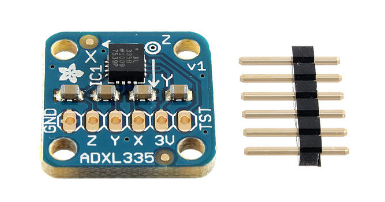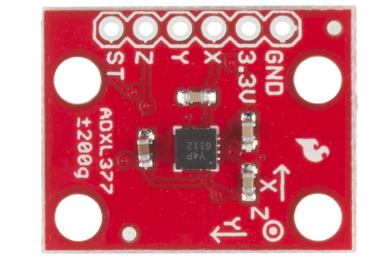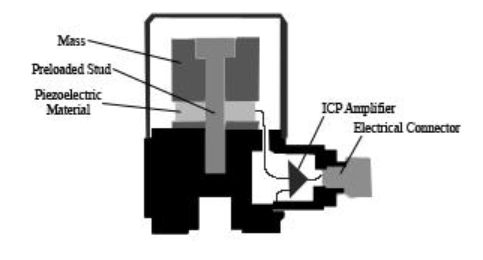Introduction
The accelerometer is a device used to measure the acceleration of an object. The sensors present in an accelerometer allow us to measure and analyse both linear as well as angular acceleration. This device has a wide range of applications in our day to day life and forms a vital component of numerous basic systems and devices.
An accelerometer measures acceleration forces in terms of the “g” unit, and can perform measurements in one, two, or three planes. It can also trigger a response or alarm if a certain threshold is exceeded. There are three main types of accelerometers: capacitive, piezoelectric, and piezoresistive. Accelerometers are most commonly used in guidance systems and inertial navigation.
What is an Accelerometer?
An accelerometer is a device used to measure and analyse linear and angular acceleration. It is a crucial component for many systems and devices in various aspects of our lives. Acceleration forces can be categorised into two types: static and dynamic. Static forces, such as friction and gravity, are forces that are continuously applied to an object. Dynamic forces, which are also known as moving forces, are forces that are applied at different rates. One common example could be the vibration of a string.
In vehicles, accelerometers are used in collision safety systems and can detect rapid deceleration. When a dynamic force is detected, the accelerometer sends an electronic signal to an embedded computer, triggering the deployment of airbags.
How does an Accelerometer work?
- The accelerometer operates on a simple principle: it measures acceleration forces and takes readings in one, two, or three planes.
- A routine can be triggered once a threshold is exceeded, allowing us to develop smart devices.
- A 3-axis accelerometer is the most commonly used type of accelerometer. It consists of three separate accelerometers that measure acceleration in the X, Y, and Z planes.
- The OKYSTAR OKY3230 is a common example of such an accelerometer which, when in a stable position with no external acceleration, will only measure the force of gravity.
- If a 3-axis accelerometer is positioned such that the X axis points to the left, the Y axis downward, and the Z axis forward, it will provide the following readings.
X = 0g
Y = 1g
Z = 0g

Accelerometer chip
Types of accelerometers
An accelerometer is a device used for measuring the rate of change in an object’s velocity. It uses an electromagnetic sensor to monitor the object or determine its position in space. An accelerometer can measure both static and dynamic acceleration.
The three main types of accelerometers are:
Capacitive accelerometer: The Capacitive Accelerometer operates on the principle of measuring the change in electrical capacitance to determine the acceleration of an object. Here are a few salient features:
- This is the most widely used accelerometer type, and is considered to be the least expensive and compact in comparison to the other types.
- It is a micro-electromechanical system, composed of components ranging from 1 to 100 micrometres.
- The working of the accelerometer is based on the displacement of a known mass suspended on springs, where one end of the spring is attached to the mass and the other end is attached to the capacitor.
- Any force experienced by the sensor results in the movement of the mass, causing a change in the distance between the capacitor plates, thereby altering the capacitance.
- However, it is to be noted that the accuracy of this accelerometer is lower for high amplitude signals and frequencies compared to the other types.

Accelerometer chip
Piezoelectric accelerometer: The Piezoelectric accelerometer measures acceleration by utilising the piezoelectric effect. A few important points to note about it are given below:
- This type of accelerometer is based on a principle that is similar to that of the piezoresistive one. The material, typically PZT, undergoes deformation when subjected to acceleration, causing a change in the electric charge.
- Piezoelectric accelerometers offer high sensitivity and accuracy, making them useful for advanced seismic estimation, crash and impact tests, and other applications that require accurate measurements.
- They can be employed in a wide range of implementations due to their exceptional performance characteristics.

Piezoelectric accelerometer
Piezoresistance accelerometers: These accelerometers are based on the change in resistance of their components when undergoing acceleration.
- The sensitivity of these devices is dwarfed by that of piezoelectric ones.
- The piezoresistive effect is the change in electrical resistivity of a material when mechanical stress is applied. The accelerometer is able to convert this change in resistance into an electrical signal.
- While the measuring range is high for this type of accelerometers, and we can measure slow-changing signals, they must be kept at a steady temperature and cannot perform well with small signals or changes.
Purpose of accelerometer
An accelerometer in vehicles measures acceleration, which is produced by motion or gravity. Its main task is to convert mechanical motion into electrical signals.
Applications of accelerometer
An accelerometer is a device that can measure acceleration of a body. Its range of application is enormous and the most common example is in inertial navigation. Some other common uses are:
- Airbag deployment in automobiles uses accelerometers.
- It can measure seismic activity and inclination.
- The depth of CPR chest compressions may also be measured via accelerometers.
- Accelerometers are used as orientation sensors in smart devices, allowing for auto rotation.
- A large number of modern electronic devices utilise accelerometers.
Summary
An accelerometer is a device for measuring linear and angular acceleration by analysing force. It operates based on a simple principle and can take measurement in one, two, or three planes. Accelerometers can be classified into three main types: capacitive accelerometers, piezoelectric accelerometers, and piezoresistance accelerometers. The number of uses of accelerometers in science and industry are enormous and the most common use is for the aircraft or the missiles in the inertial navigation systems.
Frequently Asked Question
1. What is a gravimeter?
An accelerometer configured specifically for the measurement of gravity is known as a gravimeter.
2. What is the most common use of accelerometers?
Aircrafts, missiles, and navigation systems make the most use of accelerometers.
3. What are MEMS accelerometers?
These are accelerometers that can detect changes in the mico-scale. The acronym corresponds to micro-electro-mechanical systems and these accelerometers are used in a large number of devices.
4. How can an accelerometer be used for hard drive protection?
Ans: If a hard drive undergoes excessive stress or vibration, an accelerometer can detect it and protect the data by separating the reader head from the disc. This prevents scratches and data corruption.
5. What are the key characteristics we need to keep in mind while selecting an accelerometer?
Ans: The bandwidth of the sensor, its sensitivity, frequency response, and the dynamic range are the most important characteristics while choosing an accelerometer for a particular use-case.